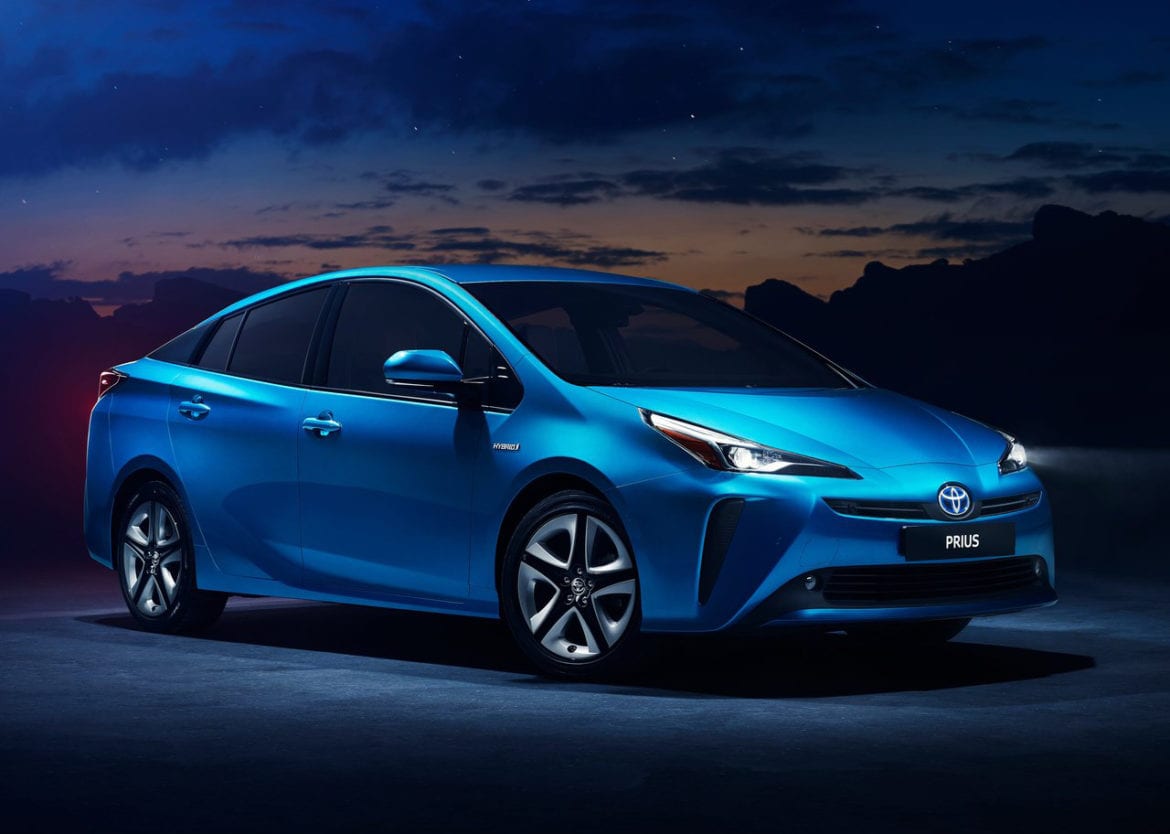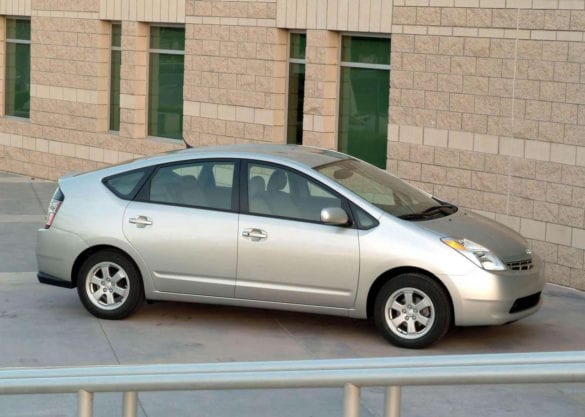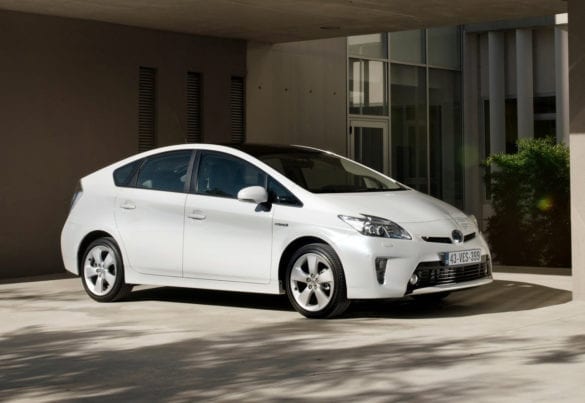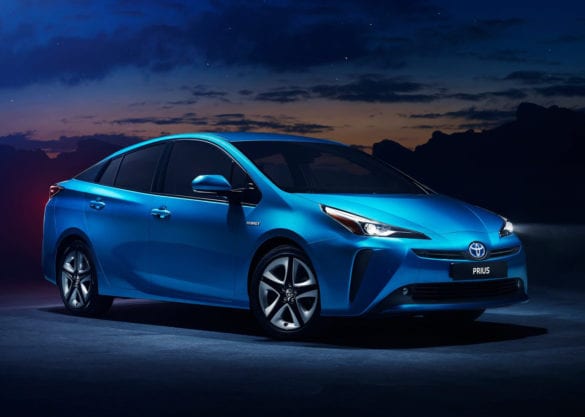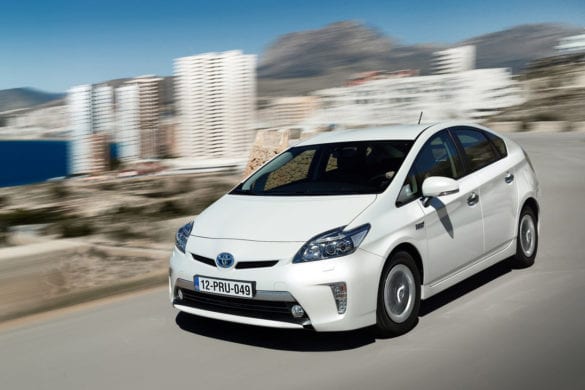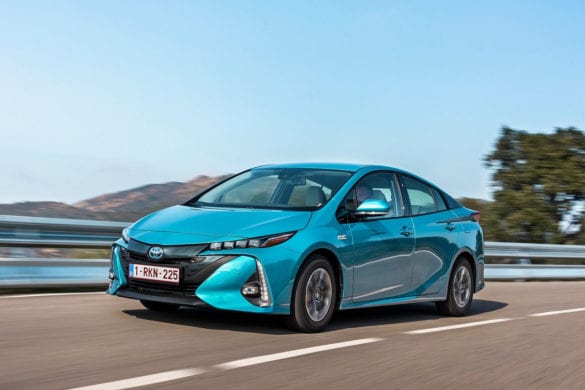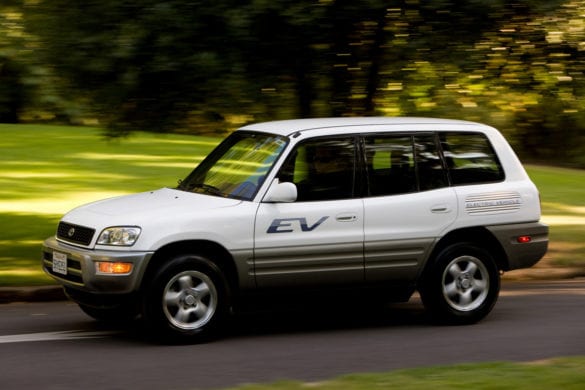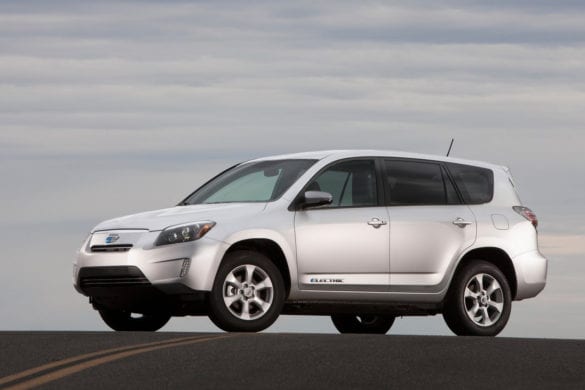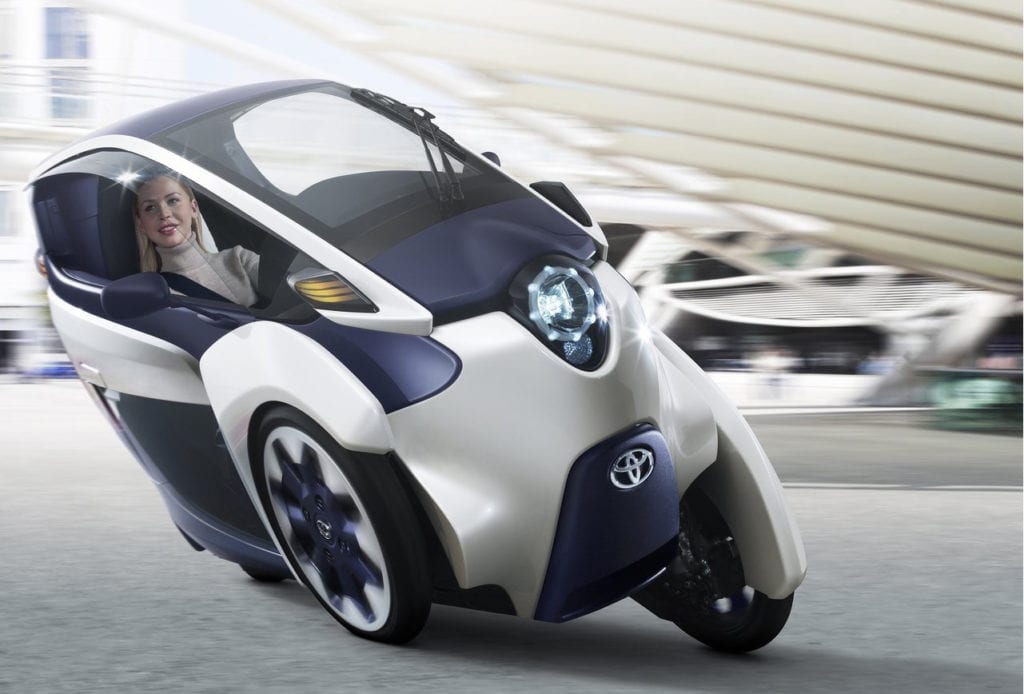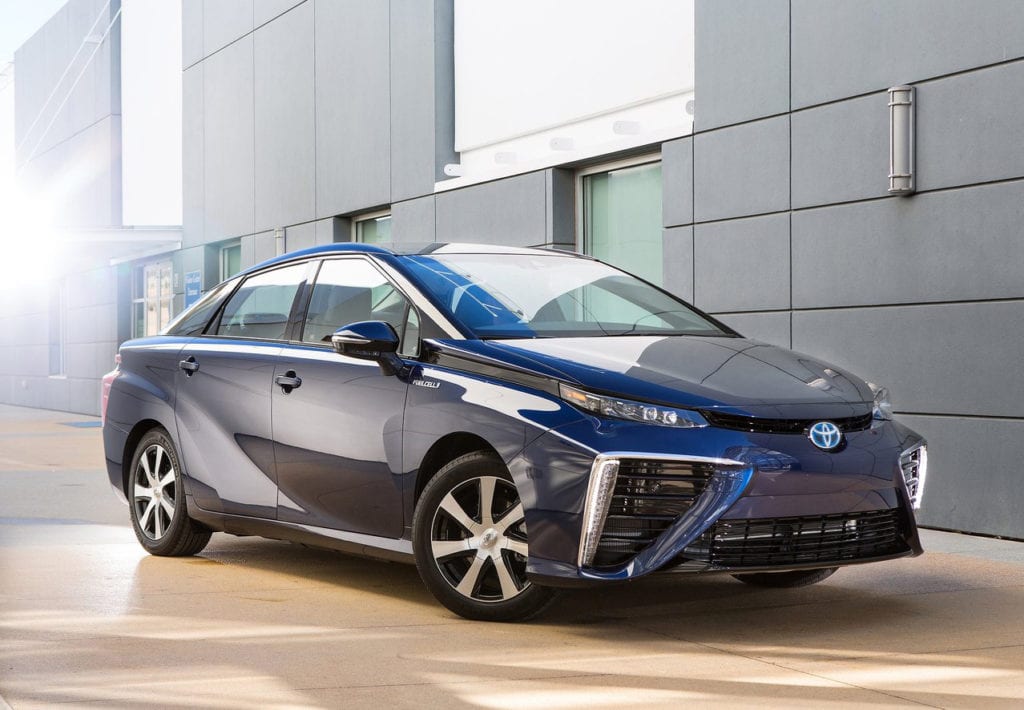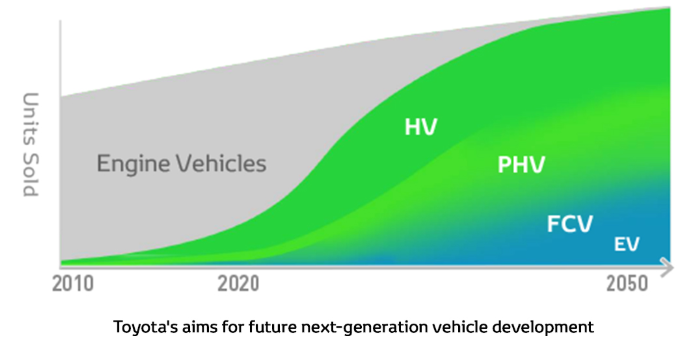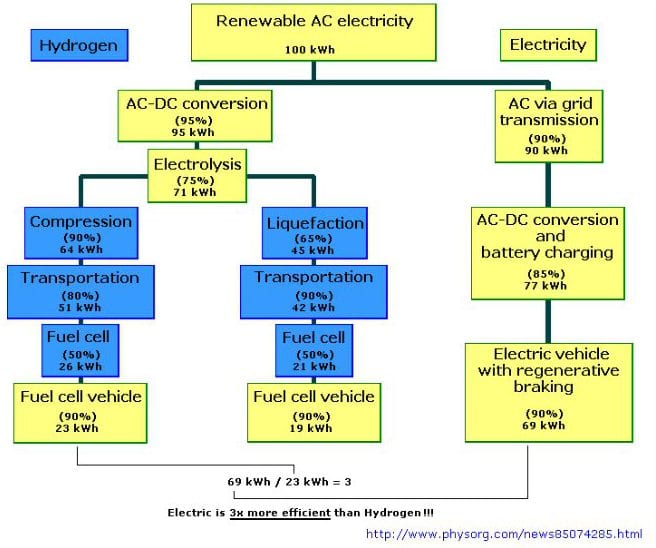The Toyota Motor Corporation is by far and away the largest automobile manufacturer in both production and market capitalization. With the ever-growing trend towards electrification, how is Toyota handling this shifting paradigm in the automotive world? Is it going full-speed towards electric cars like the Volkswagen Group, or is Toyota content with not entering into the fray too early?
Before we look at the future prospects of Toyota, lets take a look at their past and current efforts towards electrification.
THE Hybrid
First, we’ll look at a car that needs no introduction, the Toyota Prius Hybrid. The first mass-produced gasoline-battery hybrid in the world, the Toyota Prius is the hybrid. People who do not know anything about cars or hybrids in general will know what a Toyota Prius is. I mean, what other car is South Park famous (other than Tesla)? Despite the Prius’s questionable looks and stereotypes surrounding its drivers, the Prius continues to be the world’s best selling hybrid and undoubtedly contributed to starting a wave of hybrid cars that would follow after its initial 1997 release.
Currently, the Toyota Prius is in its fourth generation and achieves a combined EPA rating of 56 mpg if you opt for the Prius Eco trim. The rating passes a long-standing record of the even more quirky looking 2000 Honda Insight, which had a rating of 53 mpg. There are currently only three plug-in hybrids that give a higher mpg rating when operating in hybrid-mode: the BMW i3, the Chevrolet Volt (which is going out of production), and the first generation Toyota Prius Plug-in Hybrid.
Speaking of the Prius Plug-in, also known as the Prius Prime, the Prius has received some different body variation over the past years in order to expand its appeal. The first of which was the Prius v, which stood for “versatility”. The Toyota Prius v is a compact minivan that allows you to haul more things while staying fuel-efficient, hence the “versatility”. To cover the opposite side of the size spectrum, Toyota unveiled a Prius c, which stood for “city”. In contrast to the Prius v, the Toyota Prius c was smaller in size compared to the base Prius, making it more in line with the size of the Toyota Yaris. Once again, both of these variants sold extremely well and showed how strong the Prius brand name was for Toyota.
Other Hybrid Toyotas
The Prius is not the only hybrid that Toyota offers. As of the time of this writing, Toyota has six hybrid cars in the United States: Camry Hybrid, Avalon Hybrid, RAV4 Hybrid, Highlander Hybrid, Prius, and Prius c. Currently, there are ten model-lines that Toyota does not have a hybrid for: Yaris, Corolla, 86/FRS, Sienna, Tacoma, Tundra, C-HR, 4Runner, Sequoia, and Land Cruiser.
Admittedly, the Sienna is a minivan, the Tacoma and Tundra are pick-ups, and the 4Runner, Sequoia, and Land Cruiser are large SUVs that don’t seem to be sold as much as the RAV4. Additionally, the Yaris is more or less the size of the Prius c, and the Toyota 86/FRS is a sports-coupe. So really, the only models that might be realistically lacking in a hybrid model right now are the Toyota Corolla and the C-HR small SUV.
We can see that Toyota puts a lot of effort in traditional hybrid cars, and it has payed off big time for them, but how often have they tried to go beyond the traditional hybrid system?
Toyota’s Plug-in Hybrids
For their entry in the PHEV market, Toyota leveraged the loyalty of the Prius name and created a plug-in hybrid version of it in 2012. The first generation Prius Prime (as it’s known in the U.S.) was released with a 4.4 kWh battery that gave the car an EPA rated 6 mile all-electric range. It was only ever available in 15 states within the United States: Arizona, California, Connecticut, Hawaii, Maine, Maryland, Massachusetts, New Hampshire, New Jersey, New York, Oregon, Rhode Island, Vermont, Virginia, and Washington.
Toyota is currently on the second generation of Prius Prime that includes a bigger 8.8 kWh battery and EPA-rated 25 mile all-electric range. This time around, Toyota made sure to have the car available in all states within the U.S. While the Prius Prime did not sell anywhere near the quantities that the regular Toyota Prius and its variants do, it did meet the sales expectations set by Toyota themselves.
Toyota Fully Electric Cars
In terms of full battery electric vehicles, you wouldn’t think that Toyota’s first attempt would be with the RAV4, but the Chevrolet S10 EV and Ford Ranger EV existed around the same time, so I guess it was an experimental trend to use larger vehicles for battery testing.
Toyota had two generations of the RAV4 EV separated by almost 10 years between the generations. The first generation was produced in 1997, around the same time as the original Prius. In true late-90s electric car fashion, Toyota only allowed these RAV4s to be leased out to businesses or organizations within California, not allowing them to be used by the public. However, that was changed in 2002 when Toyota allowed the sale of all of their 328 RAV4 EVs to the general public. That 1997-2003, Toyota RAV4 EV had a 27.4 kWh battery that gave the car a respectable EPA-rated 95 mile range.
The second generation of the Toyota RAV4 EV came almost 10 years later in 2012, but this time Toyota teamed up with Tesla who produced the battery pack and electric powertrain. This version of the RAV4 came with a 41.8 kWh battery that gave the SUV an EPA-rated range of 103 miles. This time around the RAV4 EV was available to the general public, as long as you lived in California, where it was sold exclusively. This time the production run of the RAV4 was set to 2,600 units. So while a large increase from the 328 units of the previous generation, you will be hard-pressed to see one of these in the wild.
Moving on from the RAV4 EV, we have a car that might even be more rare than the first generation RAV4 EV. In 2012, Toyota launched the Scion iQ EV with a total of 600 global units, with 400 staying Japan, 100 going to the U.S., and 100 going to Europe. Once again, there was a specific restriction put on this car, as it was not to be bought by the public, but was instead used for car sharing projects. But honestly, I don’t know what consumer would want the car as the iQ EV had a EPA-rated range of only 38 miles. So as quickly as it started production, the iQ EV stopped production for the United States, and no one really talks of its existence.
And lastly, on Toyota’s sparse EV-centered page, is the i-ROAD. The Toyota i-ROAD is, well, it’s a vehicle. The i-ROAD encompasses this weird space that is in-between a motorcycle and a car. It’s a small little “car” that is meant to be exclusively used within the city since it has a top speed of 37 mph and a range of 31 miles. Once again, this was a vehicle that was made in super-low quantities, tested in a limited amount of cities, and destined for a car sharing project.
Essentially, Toyota has made no current efforts in a full-battery electric vehicle for the mass-market. Additionally, their best try in the 22 years since the inception of the Toyota Prius was an SUV that had its most important EV parts made by a different company and was limited to 2,600 units and available in only one state.
Toyota’s Fuel Cell Electric
Then we have hydrogen fuel-cell cars. In the sector that does not seem to have much production being put forward, Toyota is confident in its ability to become a leader with the Toyota Mirai. Since 1997, Toyota had produced several concepts that used fuel-cell technology as their driving force. Finally, on October 21, 2015 (the day Marty McFly time-traveled to in Back to the Future Part II), Toyota started delivery of the Mirai in California. As of the beginning of 2018, Toyota has sold over 3,000 Toyota Mirais in California. It has an EPA-rated combined 67 mpg-e, placing it just behind the Honda Clarity with a combined 68 mpg-e.
Currently, Toyota is very optimistic of fuel-cell vehicles. With the current global annual production being only 3,000 units, Toyota announced that they expect the annual production to ten-fold to at least 30,000 after 2020. To accommodate, Toyota is expanding its production facilities to meet the expected increase in demand.
So What Does Toyota’s Electric Future Hold?
Back in late-2017, Toyota unveiled its future electrification plans, which were as follows:
- By around 2030, Toyota aims to have sales of more than 5.5 million electrified vehicles, including more than 1 million zero-emission vehicles (BEVs, FCEVs).
- Additionally, by around 2025, every model in the Toyota and Lexus line-up around the world will be available either as a dedicated electrified model or have an electrified option. This will be achieved by increasing the number of dedicated HEV, PHEV, BEV, and FCEV models and by generalizing the availability of HEV, PHEV and/or BEV options to all its models.
- As a result, the number of models developed without an electrified version will be zero.
- Toyota will accelerate the popularization of BEVs with more than 10 BEV models to be available worldwide by the early 2020s, starting in China, before entering other markets―the gradual introduction to Japan, India, United States and Europe is expected.
- The FCEV line-up will be expanded for both passenger and commercial vehicles in the 2020s.
- The HEV line-up will also grow, thanks to the further development of the Toyota Hybrid System II (featured in the current-generation Prius and other models); the introduction of a more powerful version in some models; and the development of simpler hybrid systems in select models, as appropriate, to meet various customer needs.
- Toyota also aims to expand its PHEV line-up in the 2020s.
In early June 2019, Toyota would announce a hastening of its electric plans. After seeings that there was a greater demand for electrified vehicles then they accounted for, they stated that their new goal would be to get half of its global sales from electrified vehicles by 2025.
Essentially they hastened their plans by a whole five years. Unfortunately we don’t have an updated version of the plan is structured above, so we don’t know if that is the only part of the above plan that has been changed. However it was stated that by 2025 there would still be less than one million electric cars. If Toyota’s annual production goal of fuel-cell cars stays at 30,000 and then doesn’t increase at all over the next five years, then Toyota will plan on producing 750,000 at most over the next five years. This is contrast to Volkswagen who is planning on producing one million battery electrics annually starting from 2025. Of course Toyota has changed their plan already once, so it is completely possible that they will tweak it again as the market opens up.
At the time of announcement, Toyota had shown off six concepts of their future electric cars.
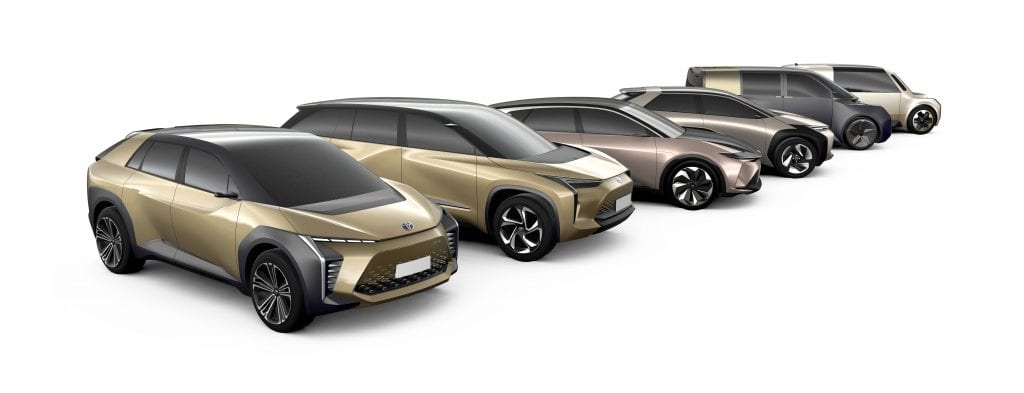
Toyota’s Views on Battery-Electrics
But for one reason or another, Toyota seems to not believe in battery electric vehicles for the time being.
In September 2017, Toyota Chairman, Takeshi Uchiyamada, told CNBC the following:
“I must say up front that we’re not against electric vehicles. But in order for electric vehicles to cover long distances, they currently need to be loaded with a lot of batteries that take a considerable amount of time to charge. There’s also the issue of battery life, But as laws and regulations (that encourage the development of electric vehicles) come into effect in places like China and the U.S., car makers will have no choice but to roll out electric vehicles or risk going out of business. Toyota is no exception, but we’re skeptical there would be a rapid shift to pure electric vehicles, given questions over user convenience.”
Lexus President Yoshihiro Sawa had the following to say to Autocar in August 2018:
“Our philosophy is to provide freedom of movement, so we have to develop technology on all fronts. We understand that electric is very necessary – more than some, perhaps, with our early move to hybrid, but we can also see that full EV will not suit everyone. You can’t make an electric Land Cruiser work, for instance – and there are people in remote parts of the world whose lives depend on that car.”
“Pure EVs currently require a long charging time and batteries that have an environmental impact at manufacture and which degrade as they get older. And then, when cells need replacing, we have to consider plans for future use and recycling. It is a complex issue – much more complex than the current rhetoric perhaps suggests. I prefer to approach the future in a more honest way.”
Bob Carter, executive vice president of sales for Toyota Motor North America, told CNBC in an interview a few weeks ago:
“Our approach is a portfolio approach. We don’t think one technology is absolutely the best solution for each customer. We are working on an entire portfolio of hybrids, which we have been selling since 1997, plug-in hybrids, and full battery-electric as well as our fuel cell vehicles.”
(That’s one plug-in hybrid model, one fuel-cell model, and four BEVs that total less than 4,000 units made)
During the same interview, when Carter was asked if Toyota had perhaps waited too long on fully electric cars, Carter responded:
“I’d argue to the contrary. When you are looking at full electric, whether it’s Tesla or others on the market, they represented last year less than one percent of the industry and as you know, the industry had a fabulous year last year. Our strategy is to keep utilizing our hybrids, plug-in hybrids, and eventually bring in battery-electric vehicles as the market grows.”
He would later go on to say that Toyota forecasts battery-electric vehicles to make up only 4-6% of the market during the later half of the 2020s.
At the 2019 Automotive News World Congress (via Ward Auto), Toyota Motor North America CEO Jim Lentz said the following of the industry:
(Tesla CEO Elon Musk) has excited a lot of people about (battery) EVs. I worry a little bit we are over-stimulated in our belief that (battery) EVs are going to take over the world quickly. Today, if you look at just alternative(-powertrain) vehicles (hybrid, plug-in hybrid, BEV- or fuel-cell) there are 94 nameplates out there. And they sold about 600,000 (units) last year. But only seven sold more than 2,000 a month.”
…
“There’s not much growth in that industry. It’s going to be a battle (for share). The question is how are we going to be able to afford to get the share, because right now cost and range anxiety is still an issue for customers. And gas at $1.69 a gallon isn’t going to make things much easier.”
Above is a picture that I took from Toyota’s website month’s ago (that I can’t really find again). While it isn’t some sort of official chart presented with a corporation’s strategy meeting, it does really show the attitude that Toyota has towards EVs. Look at it, fuel-cell vehicles are placed over EVs going towards 2050. I don’t know of any other car company that would plan out its electric car efforts this way.
I don’t want to put down fuel-cell technology, but currently there just doesn’t make much sense to make a fuel-cell car over a fully electric one. First off, it’s not as efficient of a process as a traditional EV.
Secondly, there is basically nowhere to refuel a hydrogen car within the United States unless you are in California. I understand that it might be a bit of a catch-22 considering the fact that there are no stations because there are no cars and there are no cars due to there not being any stations, but that doesn’t change the fact that it’s an issue. Additionally, even if there were an adequate amount of hydrogen stations, the electric vehicle can still be recharged at your house. The only thing in terms of refueling that the fuel-cell cars have going for them is refueling time, but that lead is quickly slipping away as 350 kW charging becomes more common in the future.
Basically, if you live outside those squares, you can’t even think of owning a hydrogen powered car.
Surprisingly enough, Yoshikazu Tanaka, the chief engineer in charge of the Toyota Mirai, agreed with Elon Musk when he called fuel-cell technology “incredibly dumb”, telling Reuters:
“Elon Musk is right – it’s better to charge the electric car directly by plugging in,” said Tanaka. But hydrogen has a place as a viable alternative to gasoline, he added.
So if fuel-cells vehicles make less sense than electric cars, why are they being made at the presumed detriment of EVs?
Toyota seems to be content with waiting around for batteries to become better before producing battery-electrics, but that same sense of caution did not stop them developing a car that could only be refueled in 46 stations within the entire United States and Canada.
It all just doesn’t make sense. Of all companies, you would suspect that Toyota would hop at the opportunity to be at the forefront of a new market. They did it back in 1997 with the Prius becoming the first mass-produced hybrid, and they take great pride in it, making mention of that fact in many statements and press releases. Perhaps Toyota takes too much pride in its hybrid domination. They have missed the train to become the first to mass-produce electric cars and so looked towards a different technology that they could be the first and best at, which led them to hydrogen fuel-cells. I hope it’s not the case that a car company might be that prideful, but perhaps Toyota is not ready for traditional hybrids to no longer be the most environmentally-friendly vehicle choice.
Recently, Toyota and Panasonic announced a joint venture regarding automotive prismatic batteries. This has some hoping that Toyota might be taking battery-electric vehicles more seriously, but the announcement only references the plan that we have outlined above from 2017.
At the end of the day, I’m just a guy who writes about electric cars. I have no experience with operating the largest car company in the world, so perhaps every single EV will crash and burn in the next 5 years. Maybe Toyota will develop the best battery in the world and use its mighty production capacity to take over the EV market single-handedly. Or maybe we’ll all be driving hydrogen cars in 10 years. Who knows. What I do know is that compared to almost every other major manufacturer, Toyota’s attitude towards electric cars is borderline dismissive. If they could put forth effort towards hybrids, electrics, and fuel cells in 1997, they can surely do it in 2019. They may not have been the first to create mass-market electric car, but they sure as hell have the potential to make the most popular one.
